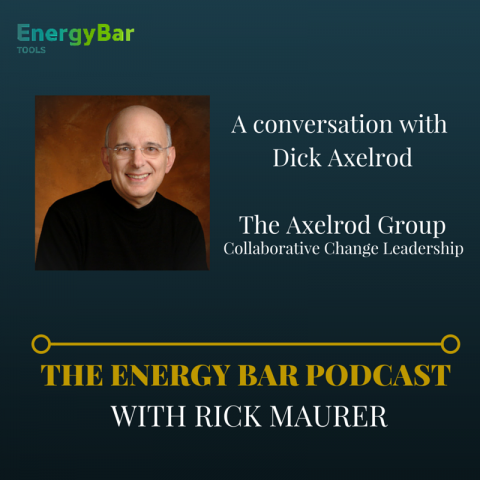Have you ever participated in a meeting that seemed to have no direction or purpose?
How was the energy in the room?
Most likely, people were looking at their watch or scrolling their smartphone. Maybe they looked as though they were taking notes, but there’s a good chance they were working on something unrelated to the meeting. Two things are certain: they weren’t engaged and the energy was low.
If we want to create energy around our business meetings, there are a few must-have ingredients: Why, Where, What, and How.
This week on The Energy Bar Podcast, I had a conversation with my friend and colleague Dick Axelrod of The Axelrod Group. Dick and his wife Emily developed an approach to change management called The Conference Model. To me, it’s one of the finest approaches to change management, because it deeply engages people in the process of change from the inception up through implementation.
“Meetings: Where productivity goes to die.”
It might surprise you to know there are an average of 27 million meetings per day and two-thirds of the people who spent time in those meetings rate them as ineffective. That’s a lot ineffective meetings! In the podcast, we talk about Energy as it relates to meetings. Dick and Emily’s recent book, Let’s stop meeting like this, provides tools to save time and get more done in meetings. In the podcast, he offers some important considerations when planning your next meeting.
It’s not every day we can pick the brain of an expert, so I hope you take the opportunity to tune into the podcast below and learn about the approach. Your next meeting and everyone attending it will thank you.
This post was published first on LinkedIn.

 Rick has advised leaders from many countries on ways to apply this new tool successfully.
Rick has advised leaders from many countries on ways to apply this new tool successfully.






